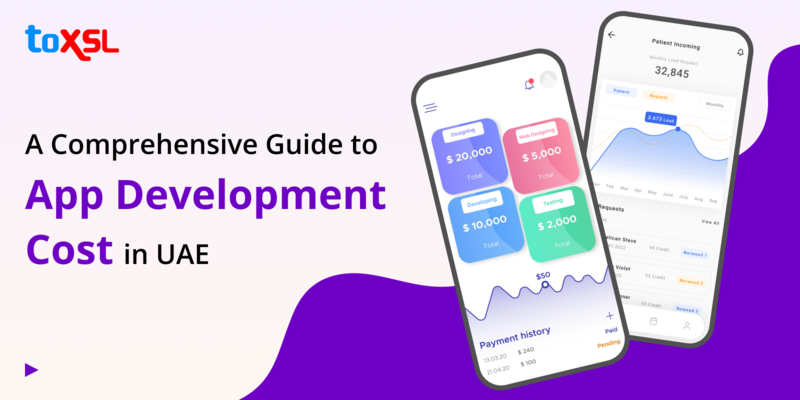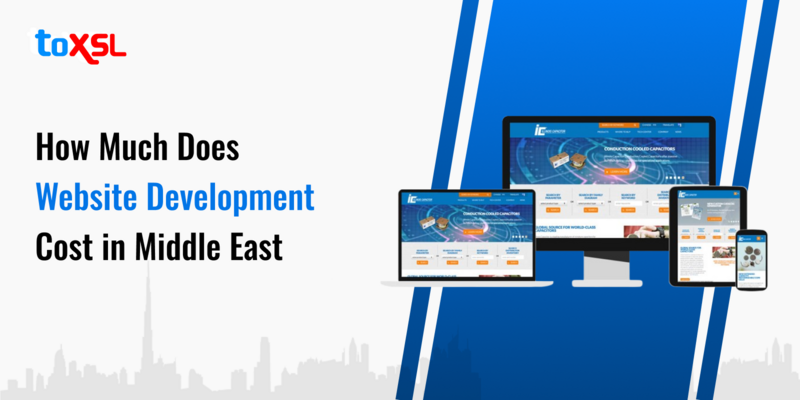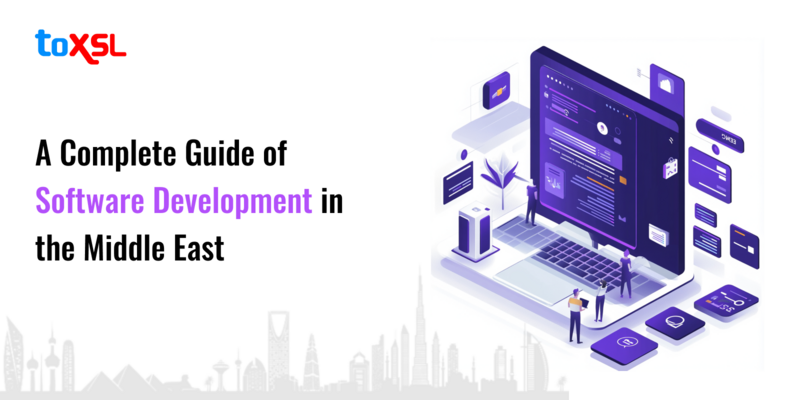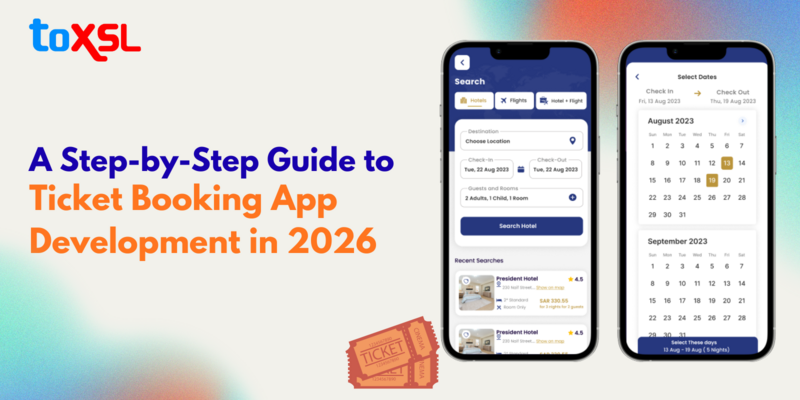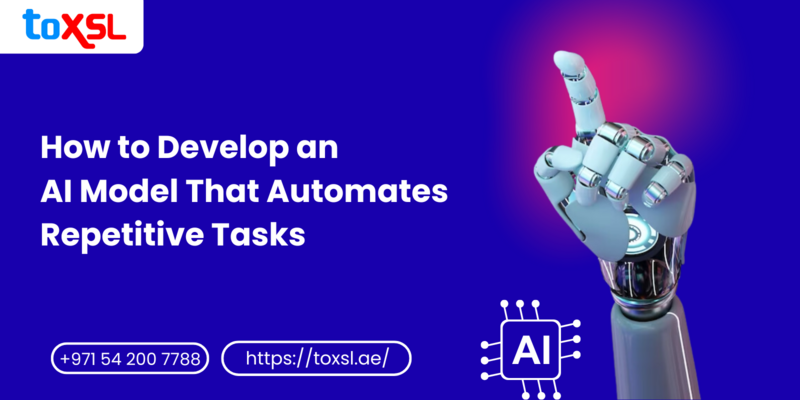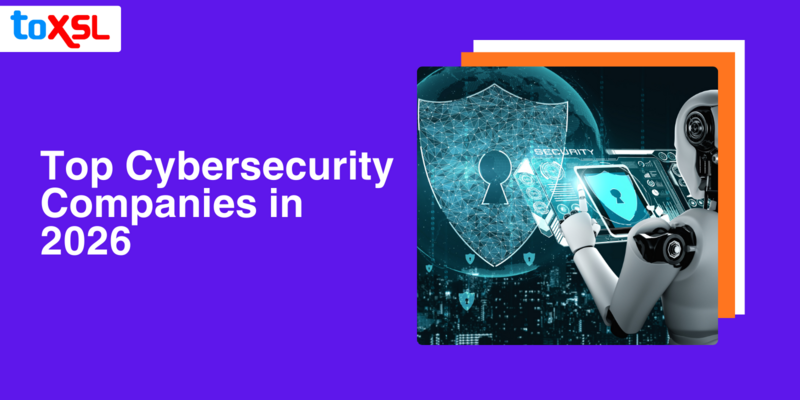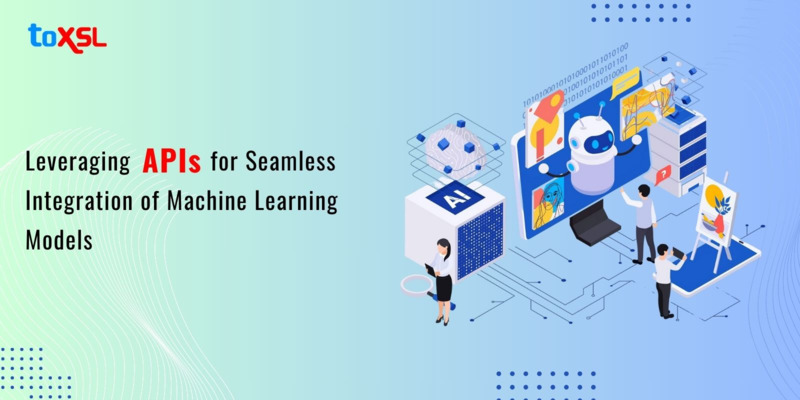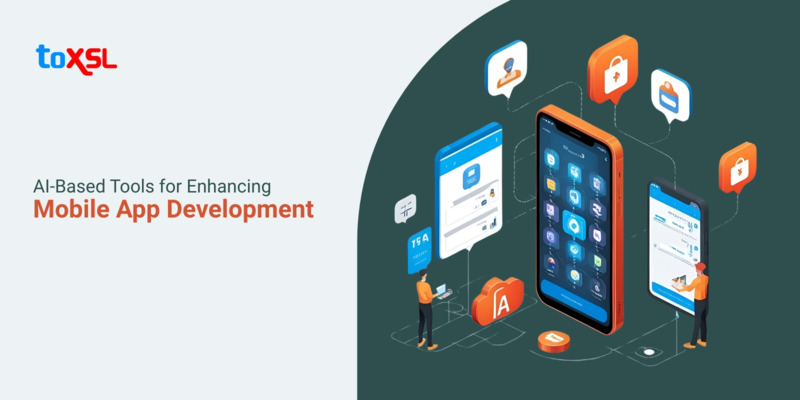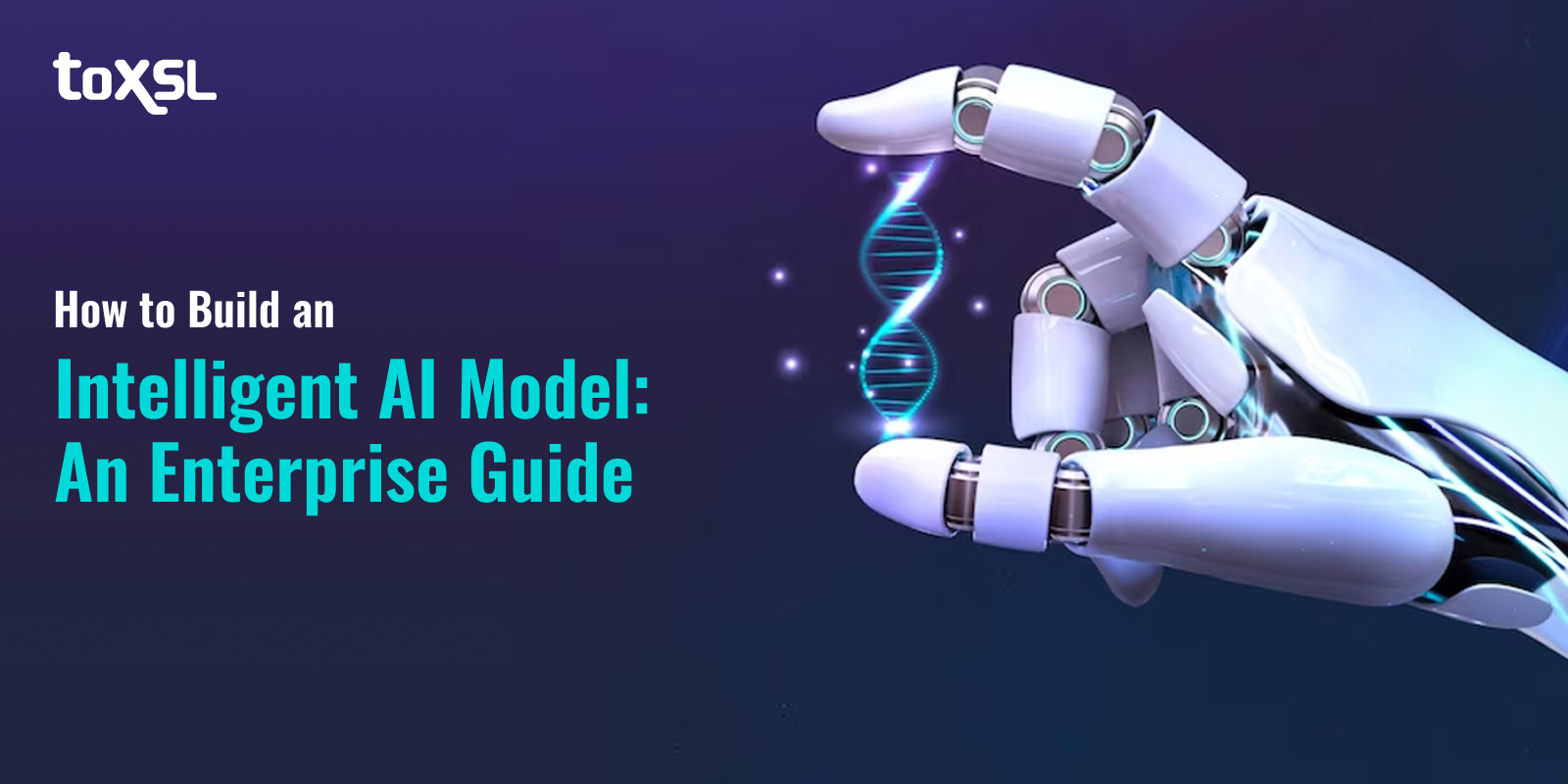
Do you want to develop a smart business? Are you looking for modern technology that can help you grow your business? Nowadays, the competition in the IT market has grown exponentially. It is crucial for every business to look forward to the methods or opt for technology that can help them stay ahead of the competition.
But how can businesses improve themselves? What is the solution? Well, Artificial Intelligence is the answer. Artificial Intelligence, a modern approach to business, is impacting enterprises worldwide, helping them grow in ways the world has never thought of before. Businesses opting for Artificial Intelligence solutions are more likely to win or do better in the market in the next five years.
According to statistics, the AI sector is experiencing remarkable growth with time and more than 80% of companies are opting for AI in some way or another. 12% of businesses in the UK are testing AI or planning to test AI. 40% of businesses are investing in AI solutions, and some are developing AI technology in-house. Hence, Artificial Intelligence is changing the entire landscape of businesses and is becoming the next frontier for growth.
But are you wondering how to get a taste of AI in business? How can you create smart AI models that can uplift your business? This blog will give you insights on how you can incorporate Artificial Intelligence and develop AI models for your business.
Key Takeaway
- AI Revolution: Artificial Intelligence (AI) is reshaping businesses worldwide by driving innovation and enhancing growth.
- Enterprise AI Architecture: Understanding the five-layer model is crucial for effective AI implementation.
- Steps to AI Model Development: Define goals, choose algorithms, preprocess data, design models, and optimize performance.
- AI Benefits: From improving efficiency and customer experience to data-driven decisions and predictive analytics, AI offers vast opportunities.
- ToXSL Technologies: Your go-to partner for tailored AI solutions to meet business goals.
Enterprise AI Architecture: The Five-Layer Model
Looking to implement AI solutions within your organization? To create an AI system for your business, it is crucial to incorporate AI layers, each playing a crucial role in enabling efficient and effective AI deployment. Let's delve into these layers and understand their significance.
1. Infrastructure Layer: The infrastructure layer forms the foundation of the AI architecture. It encompasses the physical and virtual resources required to support AI workloads, such as servers, storage systems, networks, and cloud computing resources. This layer ensures that the AI system has access to the necessary computational power, memory, and storage capacity to process large volumes of data and perform complex calculations. Additionally, it includes tools for resource management, monitoring, and scaling to accommodate fluctuating workloads.
2. Data Layer: Data is the fuel that powers AI systems, and the data layer is responsible for ingesting, storing, processing, and managing this critical resource. This layer encompasses data pipelines, data lakes, and data warehouses, enabling the seamless integration of structured, semi-structured, and unstructured data from various sources. It also includes tools for data preprocessing, cleaning, and feature engineering, ensuring that the data is ready for consumption by AI models.
3. Service Layer: The service layer acts as an intermediary between the AI models and the applications that consume their outputs. It provides a set of reusable services and APIs that abstract the complexity of the underlying AI models, making them easily accessible to developers and other consumers. This layer handles tasks such as model deployment, versioning, scaling, and monitoring, ensuring that AI models are efficiently deployed and maintained across the enterprise.
4. Model Layer: At the heart of the AI architecture lies the model layer, which encompasses the AI algorithms and models responsible for processing data and generating insights or predictions. This layer includes various machine learning and deep learning models, such as supervised, unsupervised, and reinforcement learning models, as well as natural language processing and computer vision models. The model layer also includes tools for model training, evaluation, and optimization, ensuring that the AI models are accurate, efficient, and continuously improving.
5. Application Layer: The application layer is where the AI capabilities are integrated into the enterprise's existing applications and processes. This layer includes user interfaces, dashboards, and other front-end components that enable users to interact with the AI system and leverage its capabilities. It also encompasses integration points with other enterprise systems, such as customer relationship management (CRM), enterprise resource planning (ERP), and business intelligence (BI) tools, enabling seamless data exchange and AI-driven decision-making across the organization.
Step-by-step Approach to Custom AI Model Development
How to build AI models is a question that interests many businesses these days. Businesses in the IT sector are constantly looking for ways to use Artificial Intelligence. So, if you are thinking of developing AI models for your business but don’t know where to start, here is a step-by-step approach to developing custom AI models.
Identify Goals: Clearly define the problem you're trying to solve and the goals you want to achieve with your AI model. This could be anything from image recognition to natural language processing to predictive analytics. Understanding the objectives will help you choose the right approach and evaluate the model's performance later on.
Select an AI Algorithm: There are various AI algorithms and techniques available, such as supervised learning, unsupervised learning, deep learning, and reinforcement learning. Choose the algorithm that best suits your problem and goals. For example, if you're working with labelled data, supervised learning algorithms like regression or classification would be appropriate.
Gather and Preprocess Data: AI models rely heavily on data, so it's essential to collect and prepare a high-quality dataset. This may involve web scraping, manual data entry, or leveraging existing datasets. Once you have the data, preprocess it by cleaning, normalizing, and transforming it into a format suitable for your chosen algorithm.
Design Model Architecture: Model architecture refers to the structure and configuration of your AI model. This includes the number of layers, the types of layers (e.g., convolutional, fully connected), and the activation functions used. The architecture should be tailored to your specific problem and the characteristics of your data.
Model Training: During this phase, you'll feed your preprocessed data into the model and train it to learn the underlying patterns and relationships. This typically involves splitting the data into training and validation sets, selecting appropriate hyperparameters, and running the training process until the model converges or reaches a satisfactory performance level.
Evaluate Model Performance: Once the training is complete, evaluate the model's performance using appropriate metrics. These metrics can vary depending on the problem domain and the algorithm used. For example, in a classification task, you might use accuracy, precision, recall, or F1-score to evaluate the model's performance.
Optimize and Fine-tune: Based on the evaluation results, you may need to optimize and fine-tune your model to improve its performance. This could involve adjusting hyperparameters, trying different architectures, or incorporating additional data or features.
Test and Deploy: After optimizing the model, test it on a separate test dataset to ensure it generalizes well to unseen data. If the performance is satisfactory, you can deploy the model into a production environment, such as a web application, mobile app, or embedded system.
Benefits of AI Application Development for Businesses
Everyone is talking about AI and how it will change the future of businesses. How powerful can AI be? What are the exact benefits it offers to businesses that every business is running behind AI? Now, let us shed some light on the benefits of AI model development company.
1. Improved Efficiency and Productivity: One of the most significant advantages of AI application development is its ability to automate repetitive and time-consuming tasks. By leveraging machine learning algorithms and natural language processing, AI-powered applications can streamline processes, minimize human errors, and free up valuable time for employees to focus on more strategic and creative endeavors. This increased efficiency translates into higher productivity, cost savings, and ultimately greater profitability for the business.
2. Enhanced Customer Experiences: In an era where customer satisfaction is paramount, AI applications can revolutionize the way businesses interact with their customers. Chatbots and virtual assistants, powered by AI, can provide 24/7 support, instantly addressing customer inquiries and resolving issues. Additionally, AI-driven personalization engines can analyze customer data and preferences to deliver tailored recommendations, offers, and experiences, fostering stronger brand loyalty and customer retention.
3. Data-Driven Decision Making: Businesses today are inundated with vast amounts of data from various sources, making it challenging to extract valuable insights manually. AI applications can analyze large datasets in real-time, identifying patterns, trends, and correlations that would be nearly impossible for humans to discern. This data-driven decision-making empowers businesses to make informed choices based on actionable insights, reduce risks, and optimizing resource allocation.
4. Predictive Analytics and Forecasting: AI's ability to learn from historical data and predict future outcomes is a game-changer for businesses. AI applications can forecast consumer behavior, market trends, and operational demands, enabling proactive planning and strategic decision-making. By anticipating future scenarios, businesses can stay ahead of the curve, capitalize on emerging opportunities, and mitigate potential risks before they occur.
5. Fraud Detection and Cybersecurity: In the digital age, the threat of fraud and cyber attacks is a constant concern for businesses. AI applications can play a crucial role in enhancing cybersecurity and fraud detection capabilities. By continuously monitoring and analyzing data patterns, AI systems can identify anomalies, suspicious activities, and potential security breaches in real-time, enabling businesses to take swift action and protect their assets and customer data.
6. Personalized Marketing and Advertising: Traditional marketing and advertising approaches often rely on broad generalizations and assumptions. AI applications, on the other hand, can leverage machine learning algorithms and advanced analytics to create highly personalized and targeted campaigns. By analyzing customer data, preferences, and behaviors, AI can deliver tailored content and offers that resonate with individual customers, increasing engagement, conversions, and return on investment (ROI).
7. Intelligent Automation: AI applications can revolutionize business processes through intelligent automation. From robotic process automation (RPA) to intelligent workflow management, AI can streamline and optimize various operational tasks, reducing manual intervention and minimizing errors. This not only enhances efficiency but also frees up human resources to focus on more strategic and value-adding activities, driving overall business growth and innovation.
8. Competitive Advantage: In today's rapidly changing business landscape, companies that embrace AI application development can gain a significant competitive edge. By leveraging the power of AI, businesses can stay ahead of the curve, outpace their competitors, and establish themselves as industry leaders. Early adoption and effective implementation of AI technologies can create a sustainable competitive advantage, positioning businesses for long-term success.
9. Scalability and Adaptability: As businesses grow and evolve, their technology infrastructure must be able to scale and adapt accordingly. AI applications offer unparalleled scalability and adaptability, allowing businesses to handle increasing volumes of data, workloads, and customer demands seamlessly. Additionally, AI's ability to continuously learn and improve through machine learning ensures that applications can adapt to changing market conditions, customer preferences, and emerging technologies.
10. Fostering Innovation and Creativity: While AI excels at automating routine tasks and analyzing data, it also has the potential to foster innovation and creativity within businesses. By offloading mundane and repetitive tasks to AI applications, employees can dedicate their time and cognitive resources to exploring new ideas, developing innovative solutions, and driving creative thinking. This synergy between AI and human ingenuity can lead to groundbreaking discoveries, disruptive innovations, and game-changing business models.
Also Read: Generative AI Trends: Navigating the Future of Innovation
Why Choose ToXSL’s Artificial Intelligence Solutions?
Developing AI solutions for enterprises is a challenging task. So, before starting the development process, businesses must ensure that all the resources are available to them, as it can be exhausting for the development team to work without proper resources such as the proper amount of data, training models, and AI development skills. Ensure that your team has properly understood the business requirements and is ready with the proper plan and execution.
So, if you are looking forward to hiring an intelligent AI model development company or looking to use AI services solutions in your business, choose ToXSL Technologies. Our experts offer enhanced AI solutions that are high-quality and offer the best Generative AI Development Services customized to your business objectives. We have served numerous clients globally with our secure services and helped them stay ahead of the competition. So, don’t waste your time thinking; invest in our services today and reshape your business.
FAQs
1. What programming languages and tools are best for building AI models?
Python is widely regarded as the best programming language for building AI models due to its simplicity and extensive libraries such as TensorFlow, PyTorch, and Keras. These frameworks provide robust tools for developing, training, and deploying AI models efficiently.
2. How do business ensure data quality for their AI model?
Ensuring data quality involves several practices:
• Data cleaning: Remove inconsistencies, duplicates, and outliers from your dataset.
• Normalization: Scale your data to ensure uniformity across different features.
• Feature engineering: Create new features or modify existing ones to improve model performance.
Focusing on high-quality data is crucial as it significantly impacts the effectiveness of your AI model.
3. What are common algorithms used in AI model development?
Common algorithms include:
• Linear Regression: For predicting continuous outcomes.
• Logistic Regression: For binary classification tasks.
• Decision Trees: Useful for both regression and classification problems.
• Neural Networks: Effective for complex tasks like image recognition and natural language processing.
The choice of algorithm depends on the specific problem being addressed and the nature of the data.
4. Can AI help with data cleaning and preprocessing during data modeling?
Yes, AI is a game-changer for data cleaning and preprocessing! It takes the chaos out of raw data by automatically identifying errors, removing duplicates, and filling in missing values. AI ensures your data is clean, consistent, and ready for accurate modeling, saving you from hours of manual effort. With AI, you can focus on insights instead of getting stuck in the messy details.
5. What are the key challenges when using AI for data modeling online?
While AI is powerful, challenges exist. Poor-quality data can lead to inaccurate results, and choosing the right AI tools and algorithms can be tricky. Privacy and security concerns are especially important when working with sensitive online data. Plus, AI models require regular monitoring and adjustments to stay effective. Addressing these challenges takes effort, but the benefits of AI-powered data modeling make it all worthwhile!

